Week 17
Welcome back: This week we look at another essential Verbal Reasoning Technique word analogies; reflection and rotation for Maths and non-Verbal Reasoning; and Comprehension of a text.
English
Let’s start with vocabulary this week.
This weeks 10 words
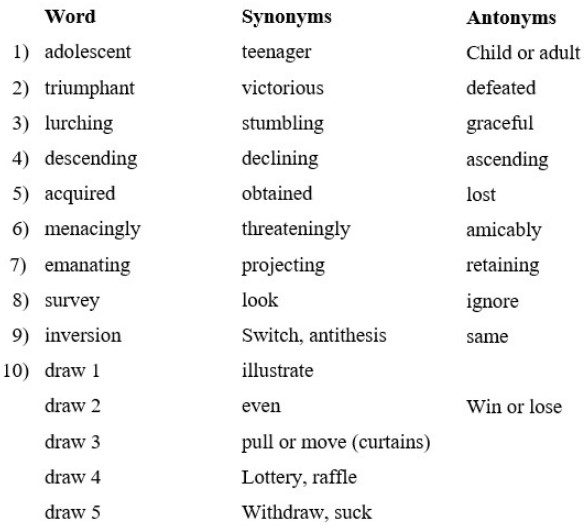
Verbal Reasoning
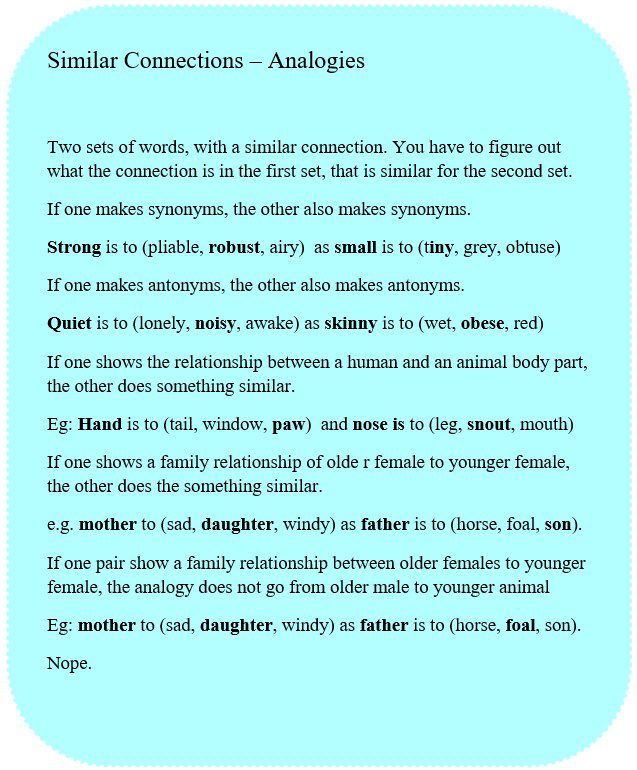
Practice:
Remember, the connection has to be similar for both sets of words. (I’ve started the first one for you. The first one won’t be done for you in the 11+)
- Car is to (petrol, engine, boot,) as horse is to (hay, ears, tail)
- Pan is to (Peter, chef, hob) as knife is to (hairdresser, butcher, singer)
- Rake is to (pool, garden, house,) as hoover is to (house, meadow, field)
- Nostril is to (ear, nose, mouth,) as toe is to (screw, foot, book)
- Clowder is to (cats, mice, birds,) as herd is to (sheep, cattle, fish)
- Whiteboard is to (teacher, nurse, bus driver) as computer is to (cyclist, author, dog walker)
- Cake is to (gardener, baker, shop) as horseshoe is to (blacksmith, jockey, rider)
- Quiver is to (queue, tremble, squat) as hostile is to (amicable, unfriendly, mere)
- Lofty is to (tall, thin, short) as wet is to (crinkly, dry, windy)
- Whirr is to (fan, ceiling, bed) as schreech is to (wall, brakes, lake)
Comprehension
You need to know your word groups and your literary techniques before you can answer all of the questions on this comprehension. Perhaps you should go back over the last few weeks of this blog to make sure you know them.
What is a preposition?
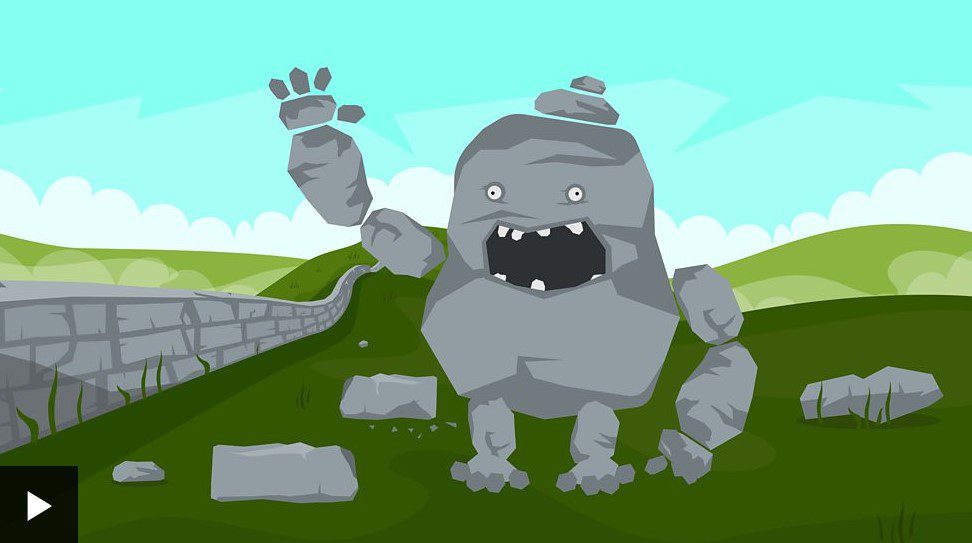
what is a fronted adverbial?
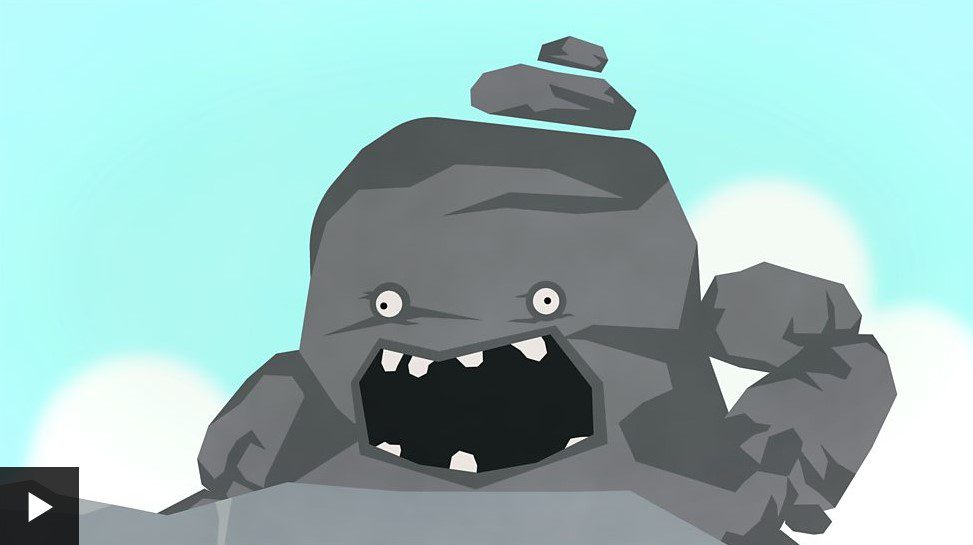
Transformation by Billy O’Leary age 13
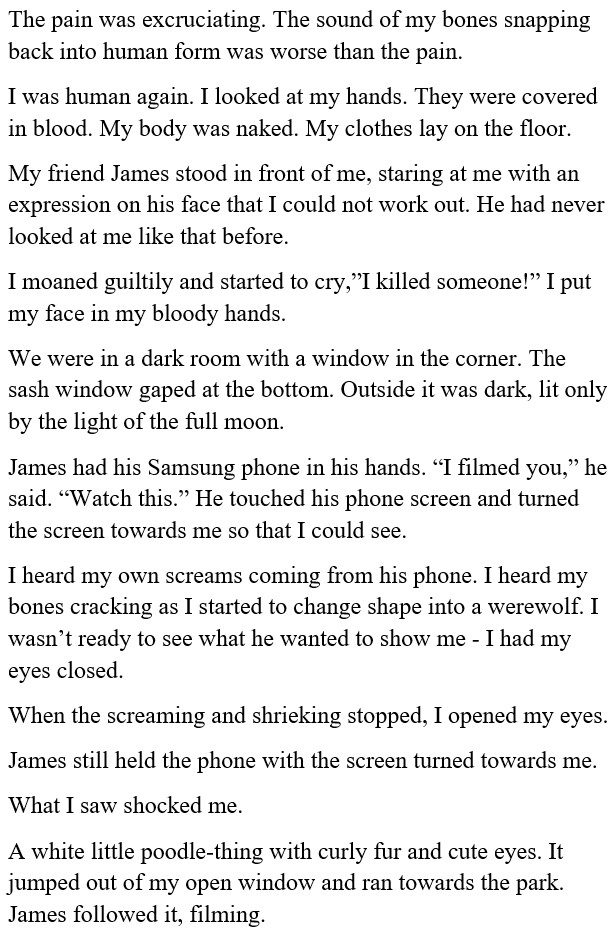
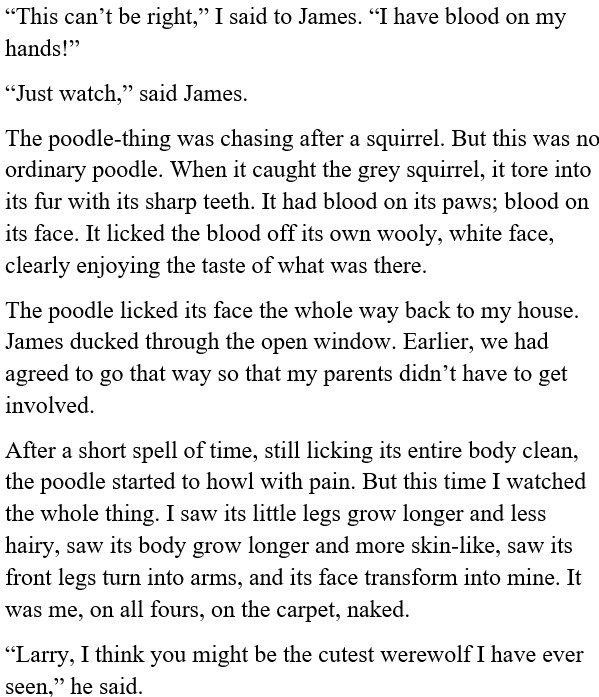
Questions: Read the question, read all of the possible answers, then check back with the passage. The earlier questions relate to the earlier part of the passage, the middle questions relate to the middle of the passage, and the later questions relate to the end of the passage.
1) Why isn’t the boy in the story ready to see what James recorded on the phone?
a) He is embarrassed
b) He is afraid he killed someone
c) He needs to go to the toilet
d) He doesn’t like phones
2)Why doesn’t the boy know what happened to him?
a) Because he is too stupid
b) He can’t remember
c) He is blind
d) James won’t tell him
3)Why does he think the dog is not him?
a) because he wasn’t paying attention to the film
b) he thought he would change into a much larger werewolf
c) it is his neighbour’s dog
d) James says it is not him
4)What did happen to the boy?
a) he stole a dog
b) he turned into a cute werewolf
c) James played a trick on him
d) he goes mad.
5)What do you think James’ facial expression was before he played back the film to his friend?
a) happiness
b) boredom
c) embarrassment
d) hunger
6) Why did James use the window and not the front door?
a) because it is easier
b) to make sure the boy’s parents don’t catch the
c) it’s quicker
d) he didn’t want to dirty the hall carpet
7) What is the narrator called?
a) Larry
b) James
c) Trixie
d) Billy
8) What is speaking on line 13?
a) Larry
b) James
c) the poodle-thing
d) the radio
9) When does this story take place?
a) in the afternoon
b) in the late evening
c) morning
d) weekend
10) ‘Snapping’ and ‘cracking’ are mentioned in the passage. What is the name of this technique?
a) simile
b) ononatopoeia
c) personification
d) alliteration
11) When Poodle thing is ‘clearly enjoying the taste of what was there,’ what do you think it was licking?
a) mud
b) sweat
c) blood
d) rhubarb
12) Which technique is used when it says ‘the window gaped?’
a) simile
b) onomatopoeia
c) personification
d) alliteration
13) what technique is used when it says ‘wooly white face’?
a) simile
b) onomatopoeia
c) personification
d) alliteration
14) What does excruciating mean? (which word fits exactly in the sentence….)
a) insignificant
b) sore
c) agonising
d) wonderful
15) What word is used instead of ‘change,’ in paragraph 16?
a) altered
b) transformers
c) transformation
d) transform
16) Which is the verb?
a) I
b) was
c) not
d) ready
17) Which is the pronoun?
a) The
b) poodle
c) licked
d) its
e) face
18) Which is the adverb?
a) I
b) moaned
c) guiltily
d) when
19) Which is the adjective?
a) in
b) my
c) bloody
d) hands
20) Which is the proper noun?
a) Larry
b) I
c) think
d) you
End of comprehension
Maths
Properties of Reflection
Horizonatal or vertical reflection: the reflection will be the same size, shape, same distance from the mirror line, and left-right reversed. See diagrams below.
Horizontal Mirror Line: left-right reversal happens because what is nearest to the mirror is nearest in the reflection, and what is furthest away from the mirror line is furthest away in the reflection. It seems the image has ‘flipped.’ Size: must remain the same or it is not a reflection.
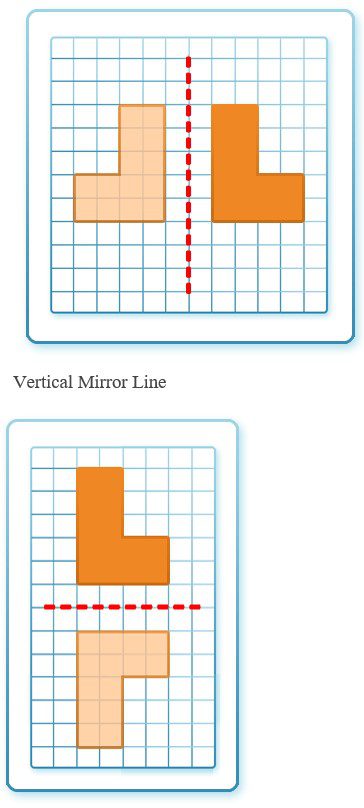
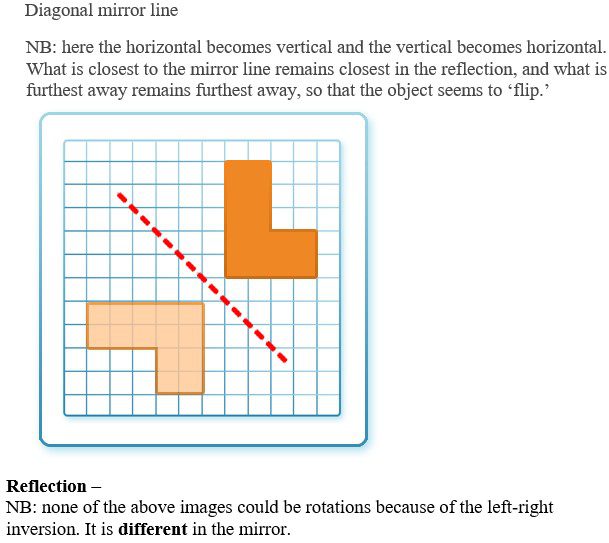
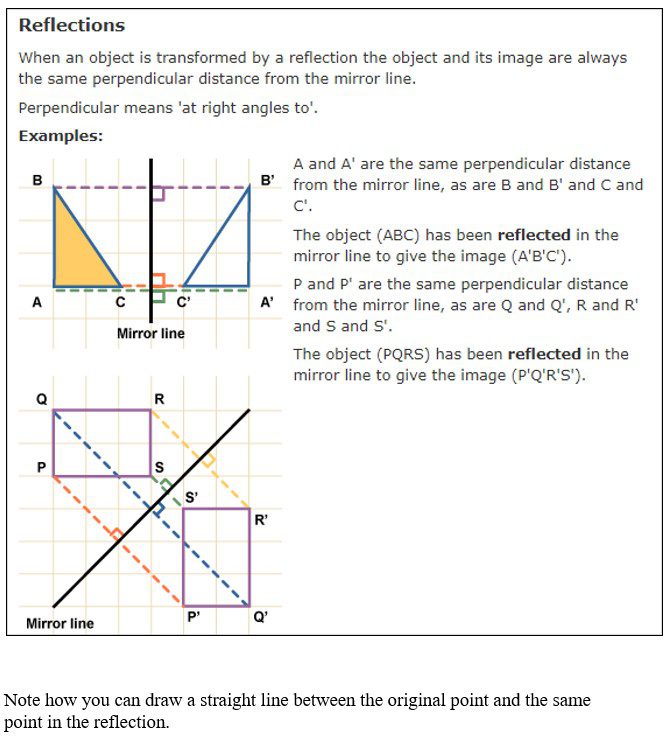
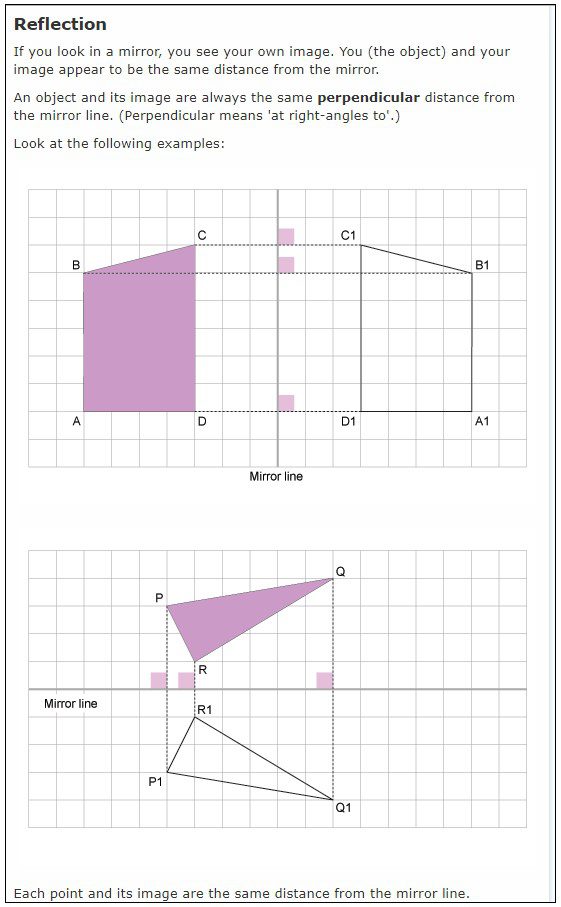
http://www.bbc.co.uk/bitesize/ks3/maths/shape_space/transformations1/revision/5/
A reflected shape with any diagonal lines cannot return to the original position (by rotating)
A rotated shape with diagonal lines can return to the original position
so this is one way you can tell the difference between a rotation and a reflection.
Here is a really useful clip on reflection for non-Verbal Reasoning.
https://www.youtube.com/watch?v=6KxR0JaDnns&t=36s
Which is the reflection?
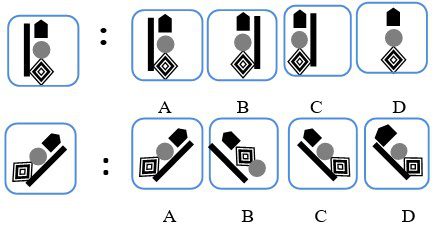
Rotation
Here is a really useful clip on rotation for non-Verbal Reasoning. https://www.youtube.com/watch?v=Guz_OYumIPM
Rotation – remember, with a rotation you can get back to the original shape. A reflected shape that had diagonal lines in it would never go back to the original shape.

There is a lot of overlap between this section of Maths and non-Verbal Reasoning.
http://www.bbc.co.uk/bitesize/ks3/maths/shape_space/transformations1/revision/4/
https://www.free-training-tutorial.com/symmetry-games.html
What if a shape is both reflecting and rotating? How can you tell?
Ask yourself, is one of the answers a rotation? If the answer is no… Ask yourself is one a reflection? If the answer is also no…. Then one of them must be both. A rotation and a reflection.
(Multiple rotations and reflections –There are instances of a shape rotating multiple times followed by multiple reflections. In this instance a shape can return to its original position.)
Next week: We will be looking at another Verbal Reasoning techique: re-ordering words to make a sentence: Spatial Reasoning with folds and hole punches; and in Maths we will be looking at nets and shape problems.
© For individual use only. Not for use by tuition centres. ©
